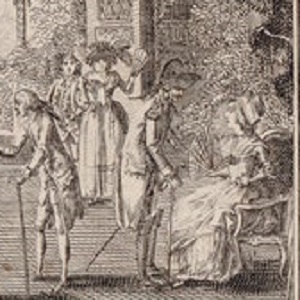Culture

Custom of Cutting the Topknot in Thailand
The custom described in the text by Phya Anuman Rajadhon is presented as it was traditionally practiced in Central Siam. The head of an infant was shaven as part of the khwan ceremony celebrating its survival and welcoming into the family.

Tophet of Carthage
These images show a stone grave marker carved with symbols and a terracotta funerary urn containing the charred remains of an infant. The Tophet of Carthage is a cemetery for infants in the ruins of the North African city of Carthage, now located in a suburb of Tunis.

Paleolithic Finger Flutings Cave Drawing
This image from Chamber A1 of Rouffignac Cave was created by a young girl we posit to be between four and five years old from her height and the places in the cave where she has chosen to make her flutings.

The Voracious Oath
This fascinating print is modeled on Jacques–Louis David’s Oath of the Horatii. In that famous painting, the artist sought to exemplify patriotic virtue by showing an austere father making his sons swear to defend Roman honor.

A Second Jean d'Arc
To those who considered Marat insincere and dangerous in his unrelenting populism, the true martyr was Charlotte Corday, who had come to Paris from Caen—a city then serving as a base for the federalist insurgency—apparently with the express intent of killing Marat.

Assassination of J. P. Marat
An arrested Corday is hustled out of the door, while the inquest begins. The expired Marat, ghastly pale, looks much more realistic than in the David rendition of his death. Also, the bath in the shape of a boot, which differs from most images, is apparently accurate.

Opening of the Club of the Revolution: Circus Act
This engraving depicts a revolutionary club as a circus act complete with dancing dogs and clowns, all celebrating "the law and the King." This image might have been visual propaganda on behalf of clubs, suggesting that they could bring different people together under a big tent, in support of th

Gope, Ancestor or Spirit Boards
The object in the photograph is a gope, or spirit board (also called kwoi or hohao). This example is from Papua New Guinea near the Wapo Creek on the Gulf of Papua.

Margaret Mead, Coming of Age in Samoa
In 1928, Martha Mead published Coming of Age in Samoa, an anthropological work based on field work she had conducted on female adolescents in Samoa.

Disciplining Children in the Codex Mendoza
Aztec children were valued creations. Language used in rituals compared infants to precious stones and feathers, flakes of stone, ornaments, or sprouts of plants.